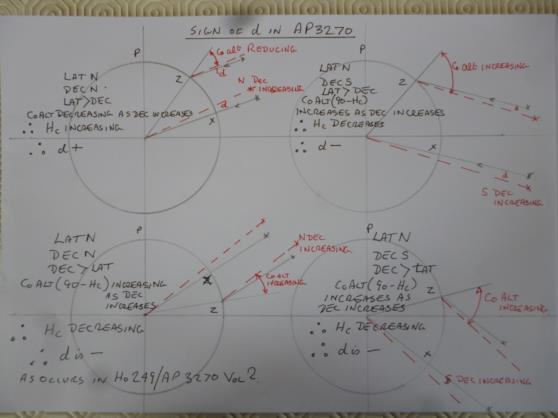
NavList:
A Community Devoted to the Preservation and Practice of Celestial Navigation and Other Methods of Traditional Wayfinding
From: David Pike
Date: 2017 Mar 27, 06:29 -0700
I said: Yes, you can get + and – d. When declination is the same name as the latitude, d appears in my complete edition of AP3270 Vol 3 to be positive. One of our spherical trig experts will no doubt explain why that has to be so.
Maybe it’s not that difficult to explain. For the special case of the body’s LHA=0, the PZX spherical triangle becomes a straight line and the sign of d (in HO249/AP3270 Vols 2 and 3) can be easily seen from a 2-D diagram (Photo 1). For other cases, perhaps a model is the best way of studying the problem. Imagine a grapefruit pierced by three mapping pins, P, Z, and X, bounded by a rubber band. P is the Pole, Z is the position of the observer, and X is the sub-stellar point of the celestial body. The side ZX is the co-altitude of the body on the PZX spherical triangle, or 90-Hc. As pin X is moved up or down equating to a change in decination, side ZX will stretch or contract. If the rubber on side ZX stretches, co-alt is increasing, so Hc is decreasing and d is negative in sign and vice versa (photo 2). My apologies to those in the Southern Hemisphere for putting north at the top. Dave P








